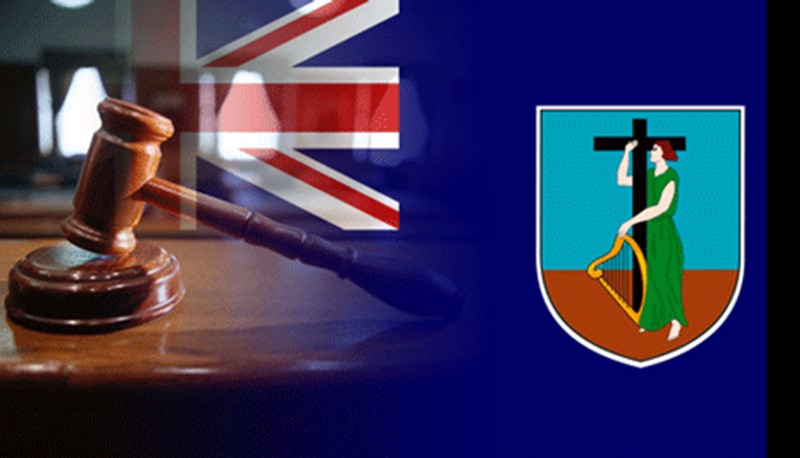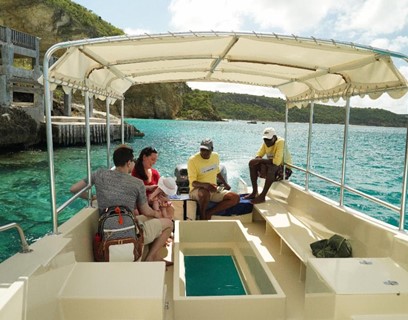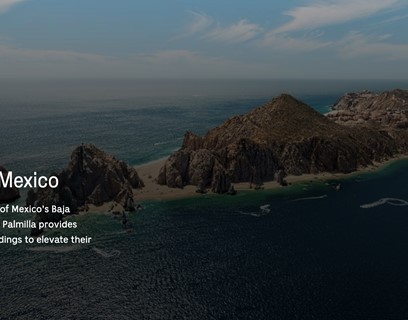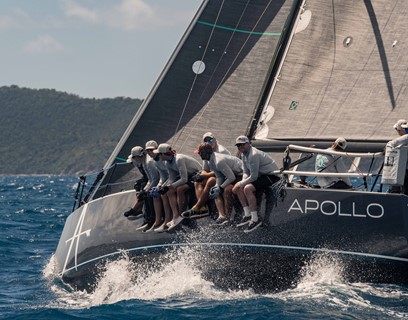
A very pleasant evening to everyone, both on Montserrat and within the wider international Diaspora Community. I am Jeevan Robinson, and welcome to the first of Edition for 2019 of the programme, “From The Speaker’s Chair”
Once again, both the Office of the Legislature on Montserrat and MNI Media are pleased to be collaborating to bring to you this second series of programmes which will run over the next 12 weeks.
From The Speaker’s Chair will be an informative and educational series aimed at raising awareness and understanding of the Montserrat Legislative Assembly (MLA), and the structure of parliamentary democracy here on Montserrat.
Every Tuesday evening, a new feature will be shared with you. We also welcome your feedback and suggestions to the programmes as presented via both ZJB Radio and also published via MNI Media’s outlet located at www.mnialive.com
We begin the series for 2019 by looking firstly at the topic, “A History of Constituencies and Elections on Montserrat"
Listen to the full audio below. The full text also is published here:
For those who may be less familiar with parliamentary language, we will begin by breaking down for you exactly what the term constituency means:
According to the well established Oxford Dictionary the term “Constituency” is best described as being; “A group of voters in a specified area who elect a representative to a legislative body.”
But before we delve more deeply into Parliamentary history on the island, let us for a moment look at the democratic foundations of Montserrat.
It is known widely that Montserrat is a British Overseas Territory.
The Head of State on the island Her Majesty the Queen Elizabeth the 2nd, who is represented by an appointed Governor from the UK’s Foreign and Commonwealth Office, also commonly referred to as the FCO.
The present Governor of Montserrat is His Excellency Mr Andrew Pearce. Montserrat’s Governor, whoever he or she may be under the Constitution Order the governs the island, assumes control for matters such as security and defence, law and order, and the island’s external affairs.
Despite the allegiance to the Her Majesty the Queen, Montserrat is however still mainly governed by a self -governing system of Representative Democracy, with a representative government that subscribes to a system of Parliamentary Democracy rooted in the Westminster model from the United Kingdom.
Representative Democracy is “a type of democracy founded on the principle of elected officials representing a group of people.”
Thus, the framework for democratic governance on Montserrat is further illustrated in that the island’s Legislative power is undertaken by both the elected government of the day, and the wider Legislative body of Parliament, and the representatives that make up Parliament.
So therefore, let us then return to our base topic for today of looking at the history of Parliament and by large, Representative Democracy on Montserrat.
Prior to 1952, Montserrat was governed by what was known then as a Plantocracy system.
Records show that early elections on the island date back to the 19th century. However, what is critical to note is that these elections were very limited as only partial members of the community were able to vote.
True Representative Government on Montserrat did not really begin until around 1936, when key electoral reforms were brought on stream.
Many persons over the years would have heard renowned historian Dr Howard Fergus, the recently departed Dr George Irish, and also many of the island’s notable political figures speak about Universal Suffrage on Montserrat.
Well, what is Universal Suffrage and how important is it to Montserrat?
Universal Suffrage is widely regarded as “The right to vote”. In Montserrat’s context, this “right to vote” was only granted to the island in 1951.
However, it was not until the February 20th, 1952 elections, that all members of the Montserrat community of legal voting age and requirement were allowed that right to exercise their franchise.
Mainly, the island’s first elected Chief Minister, William H. Bramble, led the charge that saw to this voting right being granted to all citizens of the island.
Bramble in seeking to bring Representative Democracy to Montserrat, worked with names such as R.W Griffith, M E. Walkinshaw, E T. Edgecombe, and B W. Edwards. These men as mentioned, comprised what was then known as the Montserrat Labour Party (MLP). That MLP political grouping won all five of the island’s initial constituency seats.
What is also critical to bring in here, Ladies and gentlemen, is that The Montserrat Labour Party (MLP) ran against what was then termed as the Merchant Planters, as their main opponents.
The Merchant Planters had only put forward 4 members to contest the elections, thus resulting in M E Walkinshaw winning his seat unopposed in the Central constituency.
It can be said that this year, 2019, Montserrat would thus be recognizing almost 67 years of Parliamentary Representative Democracy on the island.
Both W.H Bramble and R W Bob Griffith and those others who stood with them during this pivotal moment in Montserrat’s history began the process of building a more democratic island.
When Universal Suffrage, or the right to vote, as we have previously established, was granted to Montserrat, the island’s first election saw five members elected to what was then known as the Legislative Council in 1952.
The number of elected representatives on the island remained at just 5 members until just prior to the 1970 elections when the total number of Representatives in the Legislative Council was increased to 7 members.
Elections have been held in Montserrat in the following years throughout its parliamentary history;
1937
• 1952
• 1955
• 1958
• 1961
• 1966
• 1970
• 1973
• 1978
• 1983
• 1987
• 1991
• 1996
• 2001
• 2006
• 2009
• 2014
The Montserrat Labour Party up until 1970 had won previous elections in Montserrat.
In 1970 the Progressive Democratic Party (PDP) won all of the newly expanded seven seats within the Legislative Council. This Party was led by P. Austin Bramble. Bramble’s Party went on to win the 1973 elections.
In 1978 the People's Liberation Movement (PLM) defeated Bramble capturing all seven Legislative Council seats. John Alfred Osborne, who took the party to two more electoral victories in 1983 and 1987, led PLM.
The National Progressive Party, who captured four of the seven Legislative Council seats, won elections in 1991. Reuben T Meade was named Chief Minister.
The 1996 elections resulted in a hung parliament. The People's Progressive Alliance (PPA) and Movement for National Reconstruction (MNR) held two seats, with the NPP holding one, and the remaining seats taken by two independents. The island's first coalition government was formed by the MNR, NPP and an independent MP, with Bertrand Osborne then becoming Chief Minister for a short period before being replaced by David S Brandt, as the island’s volcanic crisis was at its most heightened stage.
In 2001 due to the onset of social and demographic changes from the mass migration of citizens caused by the Soufriere Hills Volcano, a new electoral system was introduced with a single nine-member constituency that saw voters being able to vote for nine candidates with a single vote.
The New People’s Liberation Movement (NPLM) won the 2001 elections. They took 7 of the 9 seats and John Osborne was again named Chief Minster.
However, the 2006 elections resulted in another hung parliament, with The Movement for Change and Prosperity (MCAP), NPLM and the Montserrat Democratic Party (MDP) forming a coalition government, together with one sole independent MP. Dr Lowell Lewis was then named Chief Minister.
The 2009 elections were won outright by the Movement for Change and Prosperity (MCAP). Their victory saw them winning six of the nine Legislative Council seats and Reuben T Meade once again became Chief Minister of Montserrat.
Constitutional reform saw the Montserrat Constitutional Order 2010 being adapted into law, and in 2011 the Legislative Council as it was formerly known was discarded and replaced by what we now have today as the Montserrat Legislative Assembly.
Under this new outlay for Parliamentary proceedings, Montserrat held its first elections in September of 2014 still under the one man, 9-vote system.
Elected Members of Parliament on Montserrat are elected for 5-year terms before elections become constitutionally due.
So there you have it, a brief run down of the history and process of Democracy and Parliament here on Montserrat.
Join me next week as we look at the topic; “Without Electoral Boundaries and Constituencies, what are the duties of Elected Representatives to Members of the Public?”
I am Jeevan Robinson of MNI Media, and this has been a presentation of the Programme “From The Speaker’s Chair”; a joint collaboration between Office of the Legislature on Montserrat and Marketing, News & Information Media.


